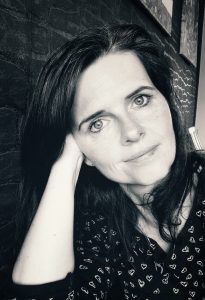As a psychologist, the focus of my work – in art and in empirical research – is always people and their realities of life. This includes our emotions, memories, expectations, hopes and actions. Working in the field of media psychology, I’m particular drawn to the question why we prefer certain media, media genres and media content.
Since 2015, I work as an academic assistant at the Chair of Applied Media Studies at the Brandenburg Technical University Cottbus-Senftenberg. I’ve graduated 2016 (Dr.rer.nat.; PhD) at the Humboldt University Berlin. In 2019, I was awarded with a 3-year scholarship from the PostDoc Network Brandenburg. My current research focus includes empirical aesthetics as well as how personality traits influence our preferences for specific genres of visual art, music or fictional film. Further research interests focus on processes of media selection and media-mediated interaction.
Current research project (habilitation): New Media – a new Me? Exploring the temporal and aesthetic self in the context of media use.
Newest Publication
Nowack, K. (2024). Beauty in the eye of the self: novices’ aesthetic art preferences, stimulation potential, and self-concepts. Current Psychology, https://doi.org/10.1007/s12144-024-06832-6.
Abstract:
This study investigated the underlying structure of novices’ aesthetic preferences for visual art. 478 participants were presented with paintings from realism, impressionism, expressionism, and contemporary disrupted realism and asked to indicate on a 5-point Likert scale how much they liked each painting. One subsample (n = 276) also rated how stimulating they found each painting in order to investigate interrelations with arousal. A second subsample (n = 202) completed the Aspects of Identity Questionnaire (Cheek & Cheek, 2018) and the Relationality-Contextuality Scale (Gollwitzer et al., 2006) to investigate interrelations with identity orientation and self-construal. First, principal component analysis revealed two style-related and four content-related aesthetic components that differed from the classic art movement categorization: expressionist, dark, communal, interior, still-life, and landscape. Second, age, gender, and art engagement were interrelated with aesthetic ratings but not stimulation ratings. Third, an inverse relationship between stimulation potential and aesthetic preferences was found that challenges theories of an inverted U-shaped relationship. Fourth, self-construal, identity orientation and aesthetic preferences were interrelated in support of the notion of an “aesthetic self” (Fingerhut et al., 2021). This study not only advances current knowledge on the influences of stimulation potential, self-construal and identity orientation. It also indicates that impressionist and realist art depicting landscapes or social themes may offer novices an easier way into the art world than expressionist art or art characterized by darker, more muted colors.
Further selected publications
Nowack (2024). From Inglorious Basterds, Aliens, and Hobbits: Individual Temporal Orientation and the Structure of Fictional Film Preferences. Psychology of Popular Media. Advance Online Publication.
Nowack, K. (2023). The Individual Time Span Scales (ITSS): Introducing a self-report questionnaire to measure individual differences in the perception of time as duration. Personality and Individual Differences, 206, 112116, https://doi.org/10.1016/j.paid.2023.112116.
Nowack, K. (2019). Unfinished sympathies: Influence of individual temporal orientation on music preferences. Psychology of Music, Volume 47 Issue 5 DOI: 10.1177/0305735618775200.
